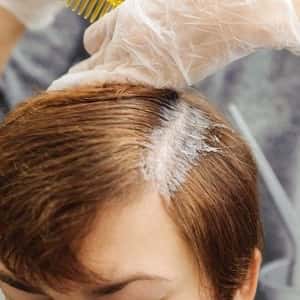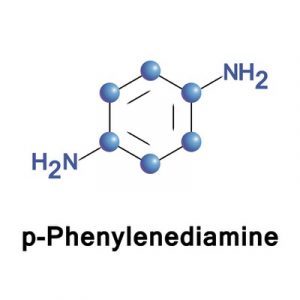
A new study published in the journal Carcinogenesis suggests that dark-colored hair dyes may be linked to breast cancer. That means that millions of baby boomers are caught on the horns of a dilemma. This is the generation that wanted to stay young forever. Their anthem in the good old days: “you can’t trust anyone over 30.” Now that they are in their sixties, and shortly their seventies, many prefer to hide the gray. But is their a link between hair dye & breast cancer?
Does Your Hairdresser Know for Sure?
Scientists have been debating the risks of hair dye for decades. In the 1970s, biochemist Bruce Ames, PhD, created a simple and affordable test for chemical mutagenicity. This allowed scientists to test chemicals for their ability to alter DNA or other genetic material. Not surprisingly, it was called the Ames test. This bacterial test became popular as a screening tool to detect potential carcinogens.
Dr. Ames and his students reported on chemicals in hair dye in the Proceedings of the National Academy of Sciences (June, 1975). Here are some of their observations:
“Despite the possibility that particular classes of bacterial mutagens may be found that are not carcinogenic, it appears that each of the hair dye compounds we have found to be mutagenic has a high probability of proving to be a carcinogen…”
Dr. Ames pointed out that:
“Surprisingly little has been published about the absorption of various components of hair dyes through the skin of the human scalp.”
That said, he described a study that did show compounds in urine suggestive of skin absorption:
“Thus, we believe it is reasonable to estimate that a woman undergoing one hair dyeing (with about 4 g of amines) could absorb as much as 40 mg (1%) of hair dye chemicals (precursors, products, and side products) through the scalp.”
Dr. Ames’ Summation:
“In conclusion, we do not find that the reported cancer studies provide convincing evidence of hair dye safety in view of the variety of mutagenic compounds present in hair dyes, the carcinogenicity of many aromatic amines, and the close structural relationship of the mutagen, 2,4-diaminoanisole to the carcinogen 2,3-diaminotoluene.”

p-Phenylenediamine PPD is an organic compound. It is mainly used as a component of engineering polymers and composites. It is also an ingredient in hair dyes and is used as a substitute for henna.
40 Years Later:
Not surprisingly, Dr. Ames’ research stirred up a hornet’s nest of controversy. Some hair dye manufacturers modified their formulas because of the furor.
If you search the National Library of Medicine for hair dye and cancer, you will discover hundreds of citations. Some researchers have reported a link between hair dye & breast cancer and others have found none. A Finnish epidemiological trial published in PLoS One (online, Aug11, 2015) was titled:
“Does Hair Dye Use Increase the Risk of Breast Cancer?
A Population-Based Case-Control Study of Finnish Women”
The authors write:
“Role of hair dyes in the etiology of breast cancer has occasionally raised concern but previous research has concluded with mixed results. Remnants of prohibited aromatic amines have been found in many hair dye products, and elevated levels of DNA-adducts of these amines have been detected from breast epithelial cells of hair dye users. However, the IARC [International Agency for Research on Cancer] working group has concluded that there is inadequate evidence for carcinogenicity of personal hair dye use and limited evidence in experimental animals for carcinogenicity of hair colorants.”
The results and conclusions of the Finnish Study:
“After adjusting for potential confounders, the odds of breast cancer increased by 23% among women who used hair dyes compared to those who did not…Our results suggest that use of hair dyes is associated with breast cancer incidence. The impact on public health may be substantial due to vast popularity of hair coloring in modern societies.”
Hair Dye & Breast Cancer? 2017 Update:
The latest research published in the journal Carcinogenesis (June 9, 2017) suggests that the Finnish results may not be a fluke. The investigators report that there may be a relationship between dark brown or black hair dye and breast cancer among both African American and white women.
Over 4000 women participated in the study. They ranged in age from 20 to 75 and were part of the Women’s Circle of Health Study. Investigators collected a wide range of data including physical activity, smoking history, exposure to hormones, alcohol use and reproductive history.
Use of hair products such as permanent hair dyes, relaxers or straighteners and deep conditioning creams was also included in the analysis. Dual use of relaxers and dark hair dyes was associated with more than a two-fold increased risk of breast cancer in white women. The risk was most apparent among women who used hair dye frequently and relied upon darker colors.
In Their Own Words:
The authors point out:
“Although no other studies have found the use of dark hair dye shades to be associated with breast cancer, long-term use of dark hair dyes have been associated with 4-fold increased risks of fatal non-Hodgkin’s lymphoma and multiple myeloma among women enrolled in the Cancer Prevention Study II and marginally associated with a 29% increased risk of bladder cancer in a recent meta-analysis…Furthermore, direct scalp contact of these dyes can lead to cutaneous absorption of these harmful compounds, particularly with long-term exposure…”
Epi Studies of Hair Dye & Breast Cancer:
Epidemiological studies can never prove cause and effect, but the authors conclude that their data support a relationship between the use of hair dye and some types of relaxers and breast cancer. Not surprisingly, the authors call for bigger and better studies. They also conclude:
“As use of various hair products and other cosmetics continue among women in the US as well as other countries, improved awareness of the potential effects of exposures to their chemical ingredients are needed.”
Where’s the FDA?
Prepare to be shocked. Drug companies, device manufacturers and makers of vitamins, minerals and dietary supplements have to report adverse reactions to the FDA. That’s the law. The companies that make hair dye are under no such obligation. That’s because cosmetics are treated differently by the FDA. Reports of problems are purely voluntary and represent only the tip of an iceberg of unknown dimensions. As a result, it is hard to know for sure how many people are adversely affected by hair dye.
Prudent Hair Coloring Precautions:
The final word is not in on hair dye & breast cancer…or any other cancer for that matter. Do not count on the FDA for guidance. At this time nobody knows for sure how much of a risk hair coloring may pose. The diseases associated with permanent dyes are rare. If, however, you would like to hedge your bets, here are a few tips:
- Nonpermanent or semipermanent products may be less dangerous than permanent dyes.
- Dark colors seem to have more potentially problematic chemicals than lighter colors. If you can lighten up, you may be safer.
- If you have a family history of connective tissue disorders, such as systemic sclerosis, lupus, scleroderma or polymyositis, be more cautious.
- Wait as long as you can stand it before beginning to color your hair and in between applications. More frequent use of such products appears to be riskier.
Share your own hair dye story or concern below in the comment section.

